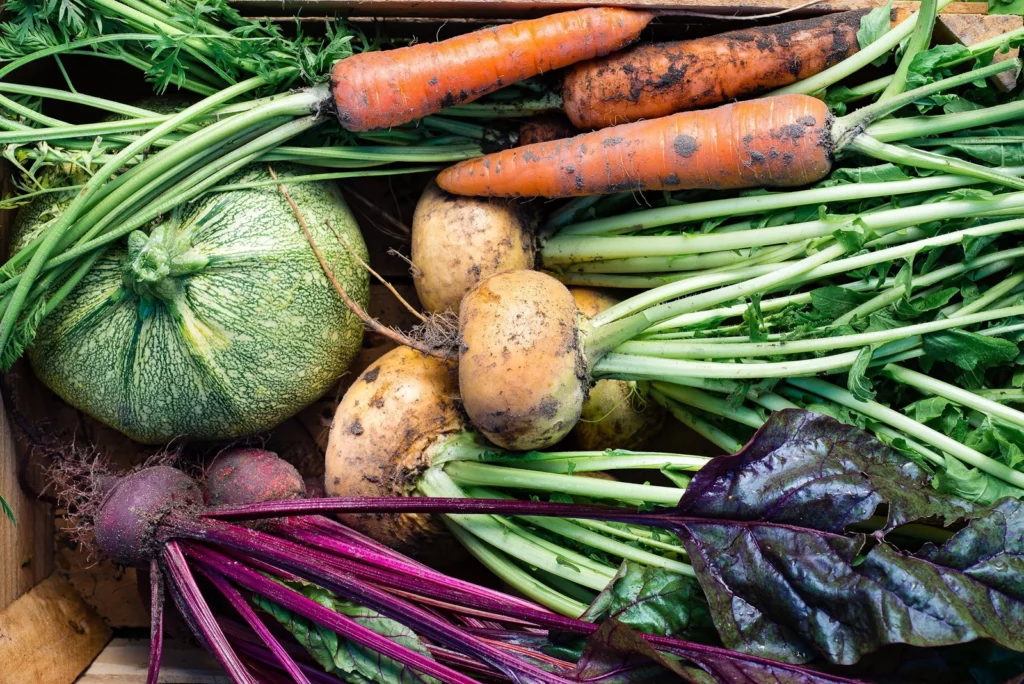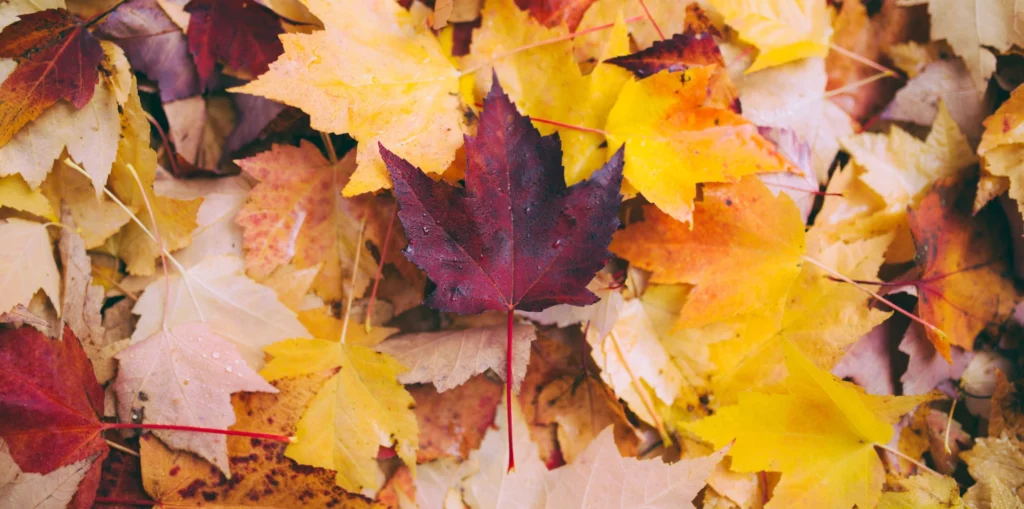The temperatures are dropping and the days are getting shorter and foggier. Autumn is in full swing and winter is not long in coming. Soon it will be quiet in the garden, but before that you should prepare it for the cold season! In this article you will learn how to winterize your garden and what you need to consider.
Contents
Harvesting the last summer vegetables
In late fall, the last harvests of summer crops are still to come: Zucchini, squash, cucumber, tomato and potatoes. As soon as the first frosts threaten, the heat-loving southerners must be brought indoors or harvested. From the tomatoes you can cut off the remaining green fruits as whole wraps with stems. Tomatoes can ripen, they are so-called climacteric fruits. To do this, you can simply hang them in a storage room that is not too warm. The last large zucchini can be stored for weeks at cool temperatures.
Tip: Apples produce the ripening hormone ethylene and allow green tomatoes to ripen faster if you place them next to it.
Bringing southerners indoors
Plants that require a lot of heat, such as citrus plants, should be brought indoors for overwintering. Here they remain in a bright, not too warm room. In the winter months, their metabolism runs on low flame, they hardly use any water and should be watered accordingly only little! Mediterranean potted herbs are now also looking forward to a protected place in the house. For them, a bright, cool place is also sufficient. Only the basil gets a warm place on the windowsill. You can find out more about overwintering perennial plants in our detailed article.
Insulate potted plants
Potted plants and balcony plants are now moving to a protected place. You should also protect hardy plants, because as soon as the pots freeze, the plants can no longer absorb water and die of thirst. It is enough for them to stand on a covered, wind-protected wall of the house. The pots are well insulated, so that the root balls do not freeze through so quickly. To do this, wrap them with bubble wrap, coconut matting and Styrofoam (also from below). You can cover the plant itself with fleece and brushwood. But be careful: the garden fleece must be breathable, so that no moisture collects under it!
Storing winter vegetables
If hard night frosts threaten, you should store carrots, celery, beet, root parsley in damp sand in the storage cellar. Leeks and cabbages can also be stored in the cellar or in an empty cold frame. In this article you will learn what you should pay attention to when storing them properly. The hardy crops remain on the bed: lamb’s lettuce, Brussels sprouts, kale and salsify. You can dig up salsify and Jerusalem artichokes throughout the winter as long as the ground is not frozen. Learn more about growing vegetables in the winter here.
Tip: A thick mulch layer of straw keeps the soil frost-free for longer.

Set up compost heap
The autumn weeks are busy cleaning up the garden. After harvesting and pruning of shrubs, plenty of organic material accumulates. For the time being, you can collect the different garden waste next to the compost. Later, mix the materials well and build a new compost heap. In very rainy periods, your compost will need a cover to keep it from getting too wet.
Winter quarters for beneficial insects
Now is the time when most beneficial insects seek shelter for the cold season. If you offer them this possibility in your garden, you can be happy next spring: Then hedgehogs & Co. crawl out of their hiding places and have a ravenous appetite for pests! They can satisfy their hunger directly in your garden and keep your beds healthy and pest-free. If you clear the lawn of leaves when cleaning up in the garden, you can use this super for the small garden inhabitants! Piles of leaves, woody debris and brushwood can simply be piled up in a quiet corner and left alone, they serve many animals as shelter for the winter.

Soil care
Most of the beds have been harvested and the soil can now slowly be left to rest. Before you do this, however, you should hoe all the areas well, remove any wild weeds and then cover them with a proper layer of mulch. You should not leave any vegetable residues on harvested beds, as they will attract slugs and snails. You can use straw, leaves and green cuttings from the garden or other organic material to mulch your beds. The microorganisms in the soil feed on the plant debris on the surface, pulling it into the soil and turning it into humus. So they improve your soil all by themselves! As an alternative to the classic organic mulch, there are special mulch films. These protect your soil, but have no special “nutritional value” for the microorganisms and therefore do not contribute to nutrient enrichment in the soil.
Fertilize heavy crop beds
Beds that have grown heavy growers this year should recover over the winter. The same goes for beds that will have heavy growers next season. Enrich them with manure, compost, horn shavings, or some other form of organic fertilizer and then leave them to their own devices. A proper mulch application is important here to protect the soil life from killing frost. Not only does the mulch serve as protection from frost and erosion, it is also constantly being turned into fertilizer by microorganisms. So you should replenish the decomposing layer as needed.
The nutrient-rich organic matter in and on the soil will decompose by next spring, making it available to your plants. As an alternative to mulching, you can also sow a green manure for protection (e.g. mustard, phacelia, clover grass, spinach). After a few weeks, cut the plants and use them as mulch.
Last steps
The dry summer is over and you can do without supplemental watering from now on. To prevent the garden pipes from freezing in winter and getting damaged, you should turn off the water outside and empty the pipes completely.
After the work is done, the gardening work comes to an end. All garden tools are cleaned of soil and the metal blades are then rubbed with linseed oil. You can now store your spade, shovel and hoe in a dry place until you need them again in the spring. Especially tools with wooden handles should be stored in a dry place to prevent them from swelling.









